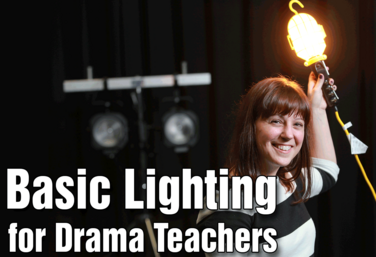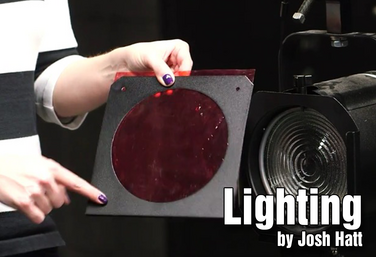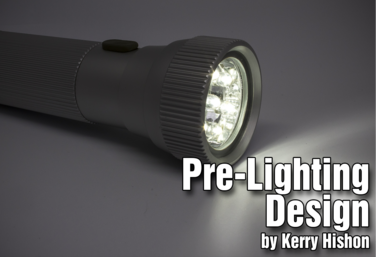Courses

PD COURSE
Basic Lighting for Drama Teachers
by Claire Broome
Join drama teacher Claire Broome and explore the basics of lighting, including lighting systems and instruments, lighting plots, how to record a lighting cue, and alternative sources of lighting. You’ll learn some practical, hands-on ways of using lighting in your classroom or theatre, whether you have a lighting system or not.
This course is packed with hands-on examples, activities for your students, and videos to develop your students’ understanding. Find out why lighting is such an important character in a production.
Read More
about Basic Lighting for Drama Teachers
Read Less
about Basic Lighting for Drama Teachers
Units

UNIT
Lighting
by Josh Hatt
This is an introductory mini-unit to lighting that can be achieved whether or not you have a lighting system. Students will work toward being able to demonstrate their knowledge of lighting effectiveness.
The questions of the unit include: How can light affect a scene? How can lighting affect the audience? What is the mood of the scene? How does lighting play a part in creating mood? How can you use shadows onstage? How does color impact the scene?
Read More
about Lighting
Read Less
about Lighting

UNIT
Pre-Lighting Design
by Kerry Hishon
The exercises within this unit are meant for students to explore the concept of lighting for theatre without the need for extensive tech or even a theatrical lighting grid.
This unit is useful for students with no prior experience with lighting or students who may be intimidated by the idea of theatre technology.
Each exercise is meant to build upon the previous one, as students grow in their confidence with thinking about lighting in different ways.
Read More
about Pre-Lighting Design
Read Less
about Pre-Lighting Design
Lesson Plans
LESSON PLAN
Creating Ambiance
by Holly Beardsley
To create ambiance is to define the feel, mood, and tone of a play. Light and sound can change ambiance drastically. A castle in dark shadows will look gloomy and mysterious, while a castle in bright light will appear magical. In this lesson, students will analyze the use of sound to create and change the ambiance of a production.
Read More
about Creating Ambiance
Read Less
about Creating Ambiance
Resources
RESOURCE
Lighting Exercise
Have students brainstorm alternative lighting options for a scene when you can’t use a traditional lighting rig. What do they come up with? How can they experiment with existing lighting sources? (For example: flashlights) Sometimes their options will be the best options.
Read More
about Lighting Exercise
Read Less
about Lighting Exercise
RESOURCE
Tech Hacks and Exercises
How do you teach tech, or use tech in your productions when you don’t have the expertise or the equipment? How do you make it work? How do you problem solve? Topics include Lighting, Set Design, Costumes, and Sound.
Read More
about Tech Hacks and Exercises
Read Less
about Tech Hacks and Exercises